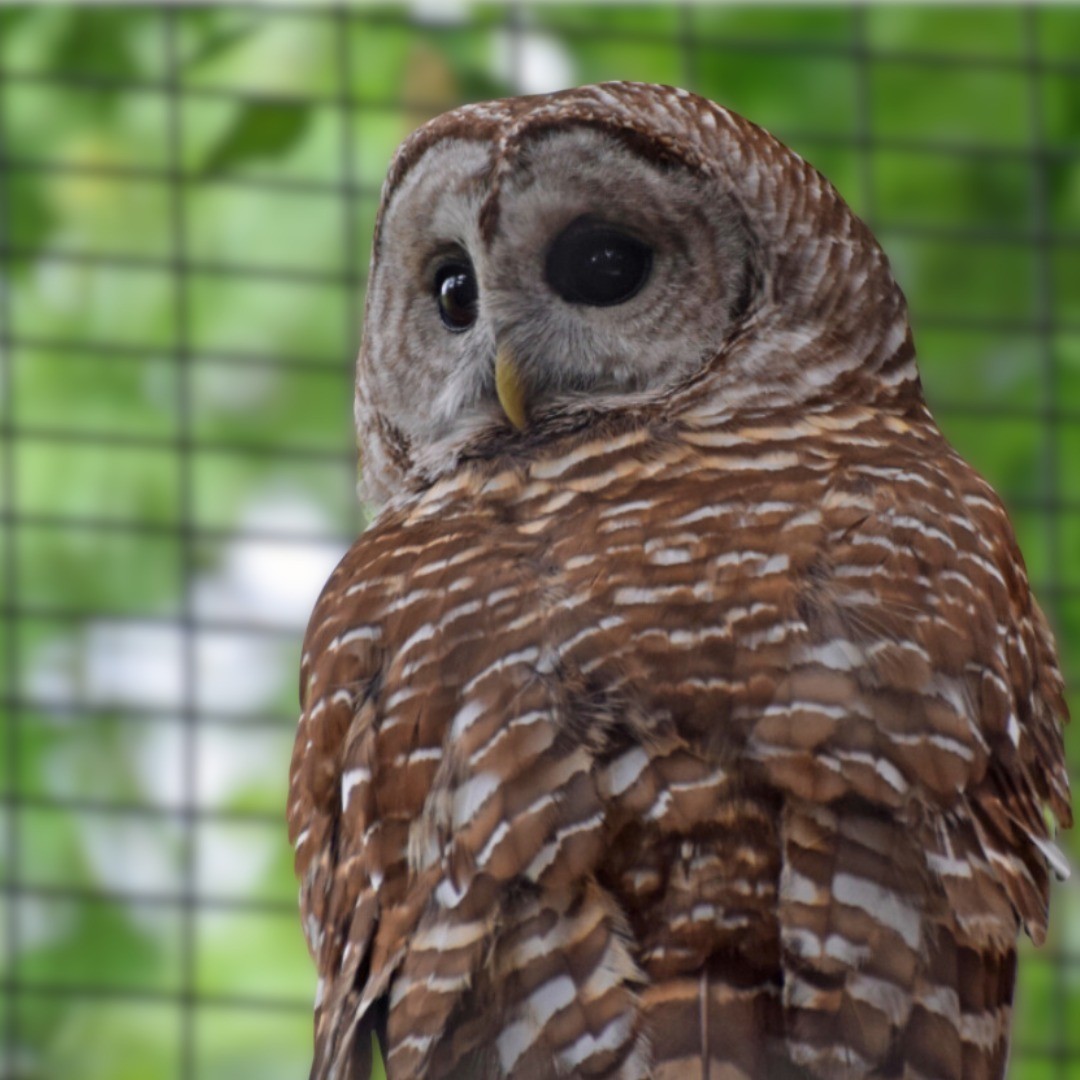On Owl Awareness Day, we acknowledge this talon-ted group of birds that are fierce hunters and move swiftly amongst the trees. Learning what you can do to keep owls safe in the wild is important, so head over to our “Inside the Zoo” blog to learn all about owls and specifics about our owl residents!🦉
Summary:
1. Introduction to Owl Awareness Day – why it is important to appreciate and protect owls.
2. The fascinating world of owls – their unique adaptations and hunting techniques.
3. Conservation efforts for owl species – how we can contribute to preserving owls in the wild.
4. Getting to know our owl residents at the zoo – a closer look at the different owl species and their personalities.
5. Tips for maintaining owl-friendly habitats – creating safe spaces for owls in our backyards.
On Owl Awareness Day, we take a moment to recognize and celebrate these magnificent creatures’ incredible beauty and prowess. With their piercing eyes, silent flight, and incredible hunting skills, owls have captivated humans for centuries. They are a true symbol of wisdom and mystery. This article will delve into the intriguing world of owls, showcasing their unique attributes and shedding light on how we can protect them in the wild.
Owls are fascinating creatures, uniquely adapted for their nocturnal lifestyle. They possess exceptional hearing thanks to their asymmetrical ear openings. These ear openings allow them to pinpoint the subtlest sounds of their prey, even in complete darkness. Their facial discs act as natural satellite dishes, funneling sound waves toward their ears. These adaptations enable owls to locate and capture their prey with flawless precision.
One of the most remarkable aspects of owls is their ability to fly silently. Unlike most other birds, owls possess specialized feathers with fringed edges that break turbulence and minimize noise. This stealthy approach to flight allows them to surprise their prey and go undetected by potential predators. So next time you catch a glimpse of an owl gliding through the night sky, imagine the absolute silence of their flight.
When it comes to hunting, owls are a force to be reckoned with. Their sharp beaks and powerful talons make them fierce predators. Owls are known for their exceptional vision, which allows them to see in low-light conditions. Their large, forward-facing eyes provide excellent depth perception, enabling them to accurately judge distances as they swoop down on their unsuspecting prey. Did you know that an owl can rotate its head to 270 degrees? This incredible range of motion helps them scan their surroundings without moving their bodies.
Despite their remarkable skills, owls face numerous challenges in the wild. Habitat loss, pollution, and hunting pose significant threats to their populations. This is where our role as stewards of nature becomes crucial. We can make a difference in their survival by supporting conservation efforts and actively participating in owl-friendly initiatives.
Conservation efforts for owl species involve protecting and restoring their natural habitats. Preserving old-growth forests, establishing protected areas, and promoting sustainable practices are all essential steps toward ensuring the long-term viability of owl populations. Additionally, raising awareness about the importance of owls in our ecosystems is key. They play a vital role in controlling rodent populations, thus helping maintain a balanced environment.
Now, let’s focus on our backyard or the local zoo. Many zoos worldwide house owl residents, providing educational opportunities for visitors to learn more about these magnificent birds. At our zoo, we have a variety of owl species, each with its distinct personality and charm. From the majestic Great Horned Owl to the adorable Eastern Screech Owl, each species captivates visitors with its unique attributes.
Interacting with our owl residents allows visitors to observe these incredible creatures up close. It’s a reminder of the importance of conserving their natural habitats and the need for continued education and awareness. We establish a personal connection by getting to know the owls at our zoo, fostering empathy and a deeper understanding of their challenges in the wild.
So, how can you contribute to protecting owls and ensuring their well-being? It starts with creating owl-friendly habitats in our surroundings. Providing nesting boxes and suitable roosting spots in our yards can offer safe spaces for these birds to breed and rest. Minimizing pesticide use and planting native vegetation also help maintain biodiversity, benefiting owls and their prey directly.
On this Owl Awareness Day, let’s celebrate the magnificence of these creatures and commit ourselves to their conservation. We become allies in their continued existence by appreciating their unique adaptations, supporting conservation efforts, and creating owl-friendly environments. Together, let’s ensure that these talon-ted hunters continue to soar through the night, enchanting us with their presence and reminding us of the importance of protecting our natural world.
*****
Source Description
On Owl Awareness Day, we acknowledge this talon-ted group of birds that are fierce hunters and move swiftly amongst the trees. Learning what you can do to keep owls safe in the wild is important, so head over to our “Inside the Zoo” blog to learn all about owls and specifics about our owl residents!🦉

